44 labels under hazard communication are the same as always
What is HAZCOM? (Hazard Communication Definition + OSHA Standards) The Hazard Communication Standards (HCS), or HAZCOM for short was made to make it faster and easier for people to get the information they need about specific chemicals. This is important in the event of a an issue as being able to take the right action and doing so quickly is critical for everyone's safety. A Guide to OSHA's New GHS Chemical Labeling Requirements The GHS-inspired standards will require chemical manufacturers and importers to label chemical containers with 1) a harmonized signal word 2) GHS pictogram (s) 3) a hazard statement for each hazard class and category and 4) a precautionary statement. These elements are discussed in greater detail below:
Hazard Communication - Overview | Occupational Safety and Health ... The Hazard Communication Standard (HCS) is now aligned with the Globally Harmonized System of Classification and Labeling of Chemicals (GHS). This update to the Hazard Communication Standard (HCS) will provide a common and coherent approach to classifying chemicals and communicating hazard information on labels and safety data sheets.

Labels under hazard communication are the same as always
PDF Hazard Communication - Occupational Safety and Health Administration Labels are available from any safety supply company. For maximum employee comprehension, labels should be as simple as possible. One style of labeling should be used consistently. Color-coded labels accompanied with numbers and pictures or icons are helpful when there are crew members who do not read English. 4. Obtain MSDSs. Hazard Communication - Health Safety & Environment Incoming chemicals are to be checked for proper labeling. Emergencies and Spills: In case of an emergency, implement the proper Emergency Action Plan 1. Evacuate people from the area. 2. Isolate the area. 3. If the material is flammable, turn off ignition and heat sources. 4. Safety training and compliance online - Safety.BLR.com Gas under pressure is a physical hazard. Respiratory sensitization, skin or eye irritation, and acute toxicity are health hazards. 7. All shipped container labels must contain the same elements of information. True. The content of a shipped container label is specifically prescribed by the hazard communication regulations.
Labels under hazard communication are the same as always. PDF HAZARD COMMUNICATIONS (HAZCOM) SYMBOLS - University of Dallas They may not always be exactly the same as NFPA. GHS . The . Globally Harmonized System of Classification and Labeling of Chemicals. or . GHS. is an internationally agreed upon system, created by the United Nations. It is designed to replace the various classification and labeling standards used in different countries. Healthstream: Hazard Communication (PA) Flashcards | Quizlet Excess PPE can create hazards such as heat stress. Excess PPE can also impair vision, mobility, and communication. The chemical hazard label indicates the class of hazard. It uses three major color-coded categories: Health (yellow), Flammability (red), and Instability (blue). False The label uses one of 9 pictograms to identify the hazard class. PDF Hazard Communication Fact Sheet - Texas Department of Insurance Pictograms are symbols that communicate information about a chemical's hazards. Pictograms consist of a red square frame, set at a point, with a black hazard symbol on a white background. They must be wide enough to be visible. While the GHS uses a total of nine pictograms, as depicted in the figure in this fact sheet, OSHA enforces only eight. Container Labeling: A Key to Compliance - Occupational Health & Safety Containers also must have the following identification on the container, label or tag [29 CFR 1910.1200 (f) (1)]: The identity of the hazardous chemical. Appropriate hazard warnings. The name and ...
FAQs on Hazard Communication Standard, GHS Labels, Safety Data Sheets ... The Hazard Communication Standard (HCS) is now aligned with the Globally Harmonized System of Classification and Labeling of Chemicals (GHS), improving the quality and consistency of hazard information in the workplace, making it safer for workers by providing easily understandable information on appropriate handling and safe use of hazardous chemicals, as well as harmonizing U.S. hazard ... Quick & Dirty Guide to GHS Chemical Labels | Avery.com 2) Printing thermal transfer labels onsite. Printing thermal GHS chemical labels requires a two-color (black and red) thermal transfer printer and GHS thermal transfer label rolls. 3) Custom printing services. Professional GHS chemical label printers will know how to automatically choose the best ink and/or printing method for the label material. › title8 › 5194§5194. Hazard Communication - California Department of ... Sep 28, 2018 · (1) This section requires manufacturers or importers to classify the hazards of chemicals which they produce or import, and all employers to provide information to their employees about the hazardous chemicals to which they may be exposed, by means of a hazard communication program, labels and other forms of warning, safety data sheets, and information and training. Hazard Communication (Chemical RTK) | FAA USA Safety and Health Programs This UWM Hazard Communication program is based on the requirements of the OSHA Hazard Communication Standard and the State of Wisconsin Employees' Right-to-Know Law. It ensures that: Chemical, biological, and physical hazards are identified and labeled. All staff has ready access to information regarding these hazards.
Hazmat Label Requirements and Regulations - Where Regulations Require ... The label background must be the same as prescribed in 49 CFR 172.411 through 172.448. All symbols, text, numbers and borders must be black except: White may be used if the background is green, red or blue. White must be used for text and class number for CORROSIVE. White may be used for ORGANIC PEROXIDE symbol. › blog › secondarySecondary Container Labels 101: HazCom and WHMIS In the U.S., the 2012 Hazard Communication Standard (HCS) is used and in Canada, the Hazardous Products Regulations (HPR) was established. There a few differences in label requirements and knowing the differences between the two systems and how to apply their corresponding secondary container labels is paramount for any safety professional. › msds › oshaOSHA Hazard Communication Standard, 29 CFR 1910.1200 at ILPI (b)(1) This section requires chemical manufacturers or importers to classify the hazards of chemicals which they produce or import, and all employers to provide information to their employees about the hazardous chemicals to which they are exposed, by means of a hazard communication program, labels and other forms of warning, safety data sheets, and information and training. WHMIS 2015 - Labels : OSH Answers - Canadian Centre for Occupational ... Suppliers and employers must use and follow the WHMIS 2015 requirements for labels and safety data sheets (SDSs) for hazardous products sold, distributed, or imported into Canada. Please refer to the following other OSH Answers documents for more information: WHMIS 2015 - General. WHMIS 2015 - Pictograms.
DOT Labeling Requirements: When Does a Hazmat Package Need Labels? That being said, you'll need to display labels on at least two sides or two ends (and not the bottom) for packages: A volume of 64 cubic feet or more. Non bulk packages that contain radioactive material. If you can't remember bulk vs non read my post on hazmat bulk packaging. DOT 106 or 110 multi-unit tank car tanks.
What Do the Different Hazardous Signs Mean? - Hazmat School Of the nine Hazard Communication Standard/GHS signs, this is the only one that is optional, so you may not always see it on every chemical that is known to hurt fish or other aquatic life. Skull and Crossbones: The skull and crossbones is an iconic image that most people strongly associate with the concept of toxicity or poison.
› sites › defaultBRIEF - Occupational Safety and Health Administration The same product identifier must be both on the label and in section 1 of the SDS. • Signal Words are used to indicate the relative level of severity of the hazard and alert the reader to a potential hazard on the label. There are only two words used as signal words, “Danger” and “Warning.” Within a specific hazard class, “Danger”
When Are Products Exempt From the HazCom Standard? In fact, in reviewing 10 OSHA citations of cannabis dispensaries from 2016 and 2017, all citations were violations of hazard communication and employee exposure to hazardous materials. So as a quick guide, we've created a 'cheat sheet' of those items which are exempt according to the Hazard Communication Standard. It's important to note ...
How to Conquer Four HazCom Labeling Conundrums However, there are three reasons employers should strongly consider moving to the use of labels that are fully GHS compliant: 1. Shipments of new chemicals coming into the facility will have fully...
› laws-regs › regulations1910.1200 - Hazard Communication. | Occupational Safety and ... The details of the hazard communication program developed by the employer, including an explanation of the labels received on shipped containers and the workplace labeling system used by their employer; the safety data sheet, including the order of information and how employees can obtain and use the appropriate hazard information.
Chemical Safety: Labels and SDSs - Washington State University The Hazard Communication Standard requires that employees have information about the chemicals they are potentially exposed to at work, as well as safe work practices and protective measures to minimize exposure and avoid chemical related injuries and illnesses. Much of that information is included on the container label and in the safety data ...
› current › title-29eCFR :: 29 CFR 1910.1200 -- Hazard communication. (d) And data on toxicity for A and C are available and substantially equivalent; i.e., they are in the same hazard category and are not expected to affect the toxicity of B; then . If mixture (i) or (ii) is already classified based on test data, the other mixture can be assigned the same hazard category. A.0.5.1.6 Aerosols.
› dosh › dosh_publicationsSample Hazard Communication Program Date: [Type the date of last review] As required by California’s Hazard Communication (HazCom) Regulation (T8 CCR 5194), our company has developed this Hazard Communication Program, which we implement and maintain as an important component of our Injury and Illness Prevention Program (T8 CCR section 3203) to enhance our employees’ health and safety.
OSHA-Hazard Communication Flashcards | Quizlet 1. a short term of brief exposure that may create an immediate health hazard. 2.For example, if you come in contact with a surface that has a chemical irritant, you could break out in a rash. Chronic Exposure. 1. is a repeated or prolonged exposure (over months or years) that may bring about slowly developing symptoms. 2.
29 CFR § 1910.1200 - Hazard communication. | CFR | US Law | LII / Legal ... Employees shall be informed of: (ii) Any operations in their work area where hazardous chemicals are present; and, (iii) The location and availability of the written hazard communication program, including the required list (s) of hazardous chemicals, and safety data sheets required by this section . (3) Training.
NFPA, HMIS and OSHA's GHS Aligned Hazard Communication Standard With GHS adoption, labels on shipped containers are more prescriptive, and include six standard elements: Product Identifier matching the product identifier on the safety data sheet Supplier Information including name, address and phone number of responsible party Signal Word, either "Danger" or "Warning" depending upon severity
Hazard Communication: Labeling & Marking - Oklahoma State University ... HMLS Labels The HMLS labeling system operates on the same principle as the NFPA diamond. Blue indicates health hazard, red indicates flammability, yellow indicates instability, and special information (such as what personal protective equipment to wear) will be provided in the white section.
Hazmat Labels, Hazmat Placards, and Hazmat Markings - Labelmaster DOT Placards are larger, more durable versions of hazard labels that are usually placed on bulk packages or transport vehicles to communicate the hazards of chemicals inside. This is why placards are used. If you need assistance determining which DOT placard fits your needs, use Labelmaster's Placard Finder SM. Why are DOT placards important?
GHS Label Requirements for Shipping - eSafety Training A signal word is an important GHS label requirement. There are only two words used as signal words: "Danger," and "Warning." They are used to convey to the reader the level of severity of the hazard within the container. Danger is used for the most severe hazards. Warning is used for less severe hazards.
PDF Hazard Communication Fact Sheet for Office Personnel Employees must be told what information can be found on the MSDS/SDS. 4. All chemicals or products must be labeled as to the name of the product or chemical and the hazard that it poses. Original labels should always be left in place. If a product is put into a different container it must be labeled properly. 5.
GHS Labeling Requirements: The Definitive Guide [2021 Update ... - Luminer GHS signal words clarifies the relative level of danger a hazardous chemical represents. There are only two GHS signal words, though: Warning Danger The former is used for lesser hazards while the latter is for labeling those with greater degrees of severity. GHS label requirements also specify that only one of these words can be used.
Safety training and compliance online - Safety.BLR.com Gas under pressure is a physical hazard. Respiratory sensitization, skin or eye irritation, and acute toxicity are health hazards. 7. All shipped container labels must contain the same elements of information. True. The content of a shipped container label is specifically prescribed by the hazard communication regulations.
Hazard Communication - Health Safety & Environment Incoming chemicals are to be checked for proper labeling. Emergencies and Spills: In case of an emergency, implement the proper Emergency Action Plan 1. Evacuate people from the area. 2. Isolate the area. 3. If the material is flammable, turn off ignition and heat sources. 4.
PDF Hazard Communication - Occupational Safety and Health Administration Labels are available from any safety supply company. For maximum employee comprehension, labels should be as simple as possible. One style of labeling should be used consistently. Color-coded labels accompanied with numbers and pictures or icons are helpful when there are crew members who do not read English. 4. Obtain MSDSs.

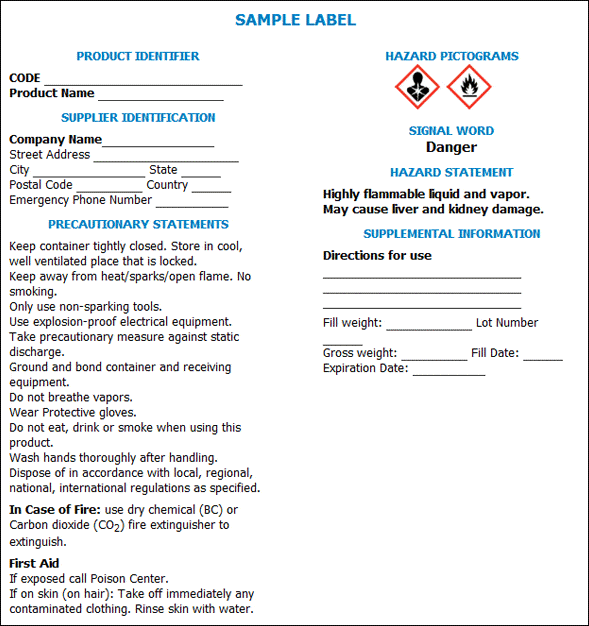
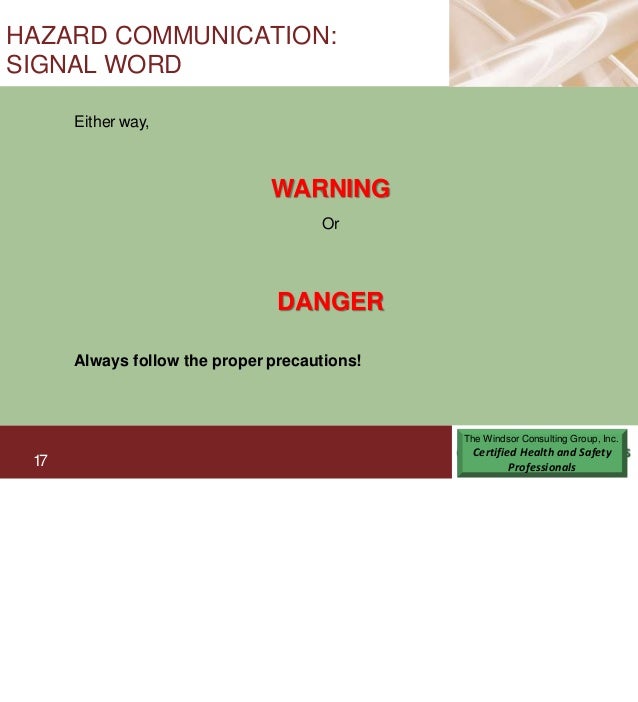
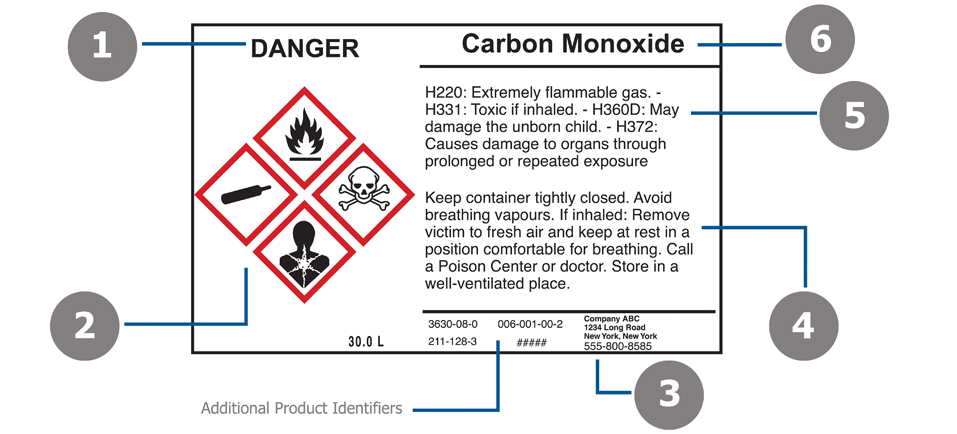

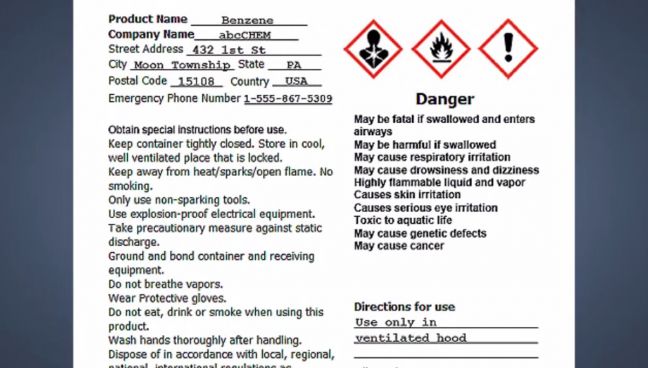
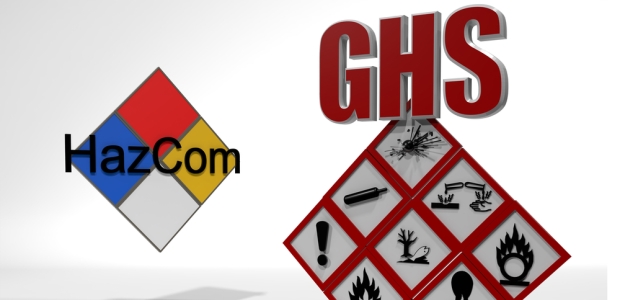
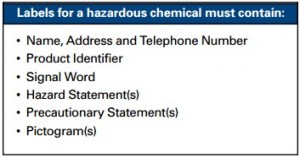
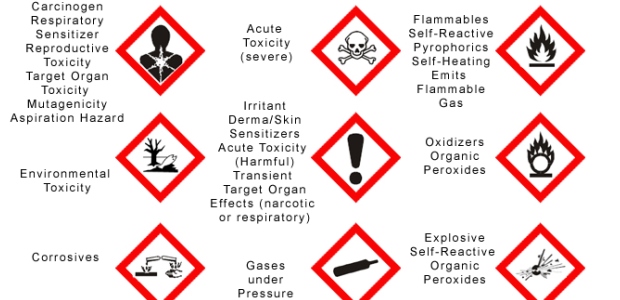
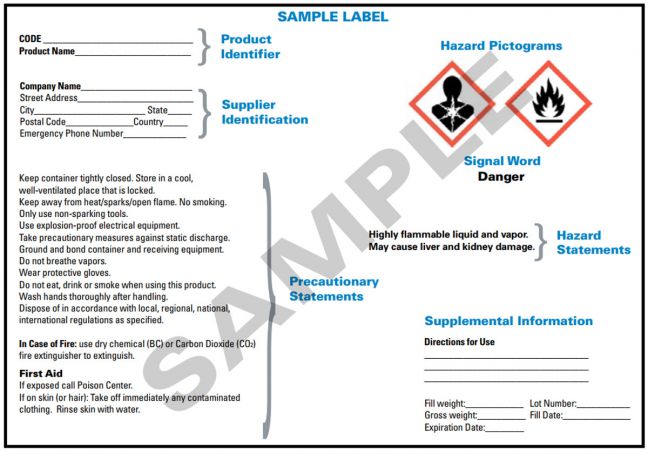






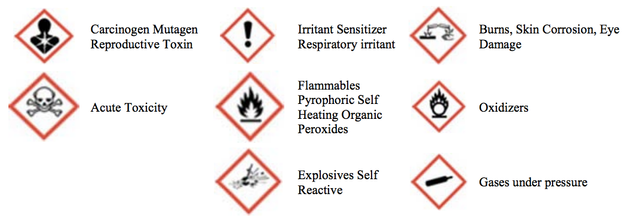
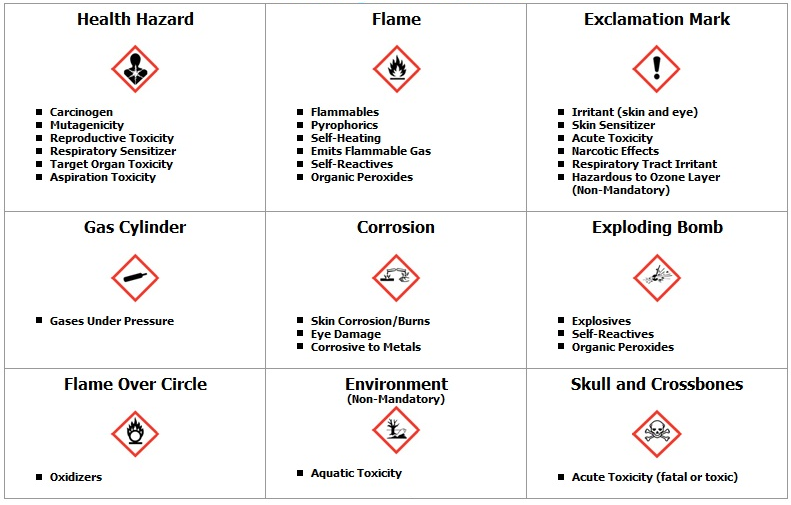

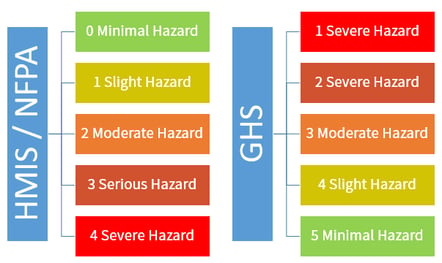
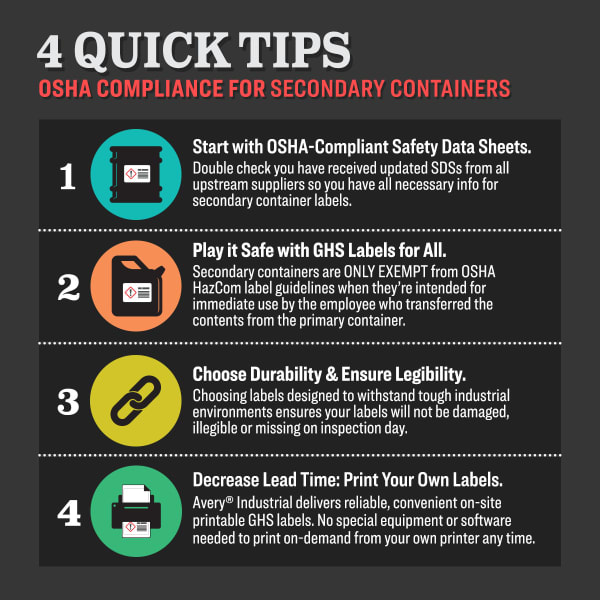


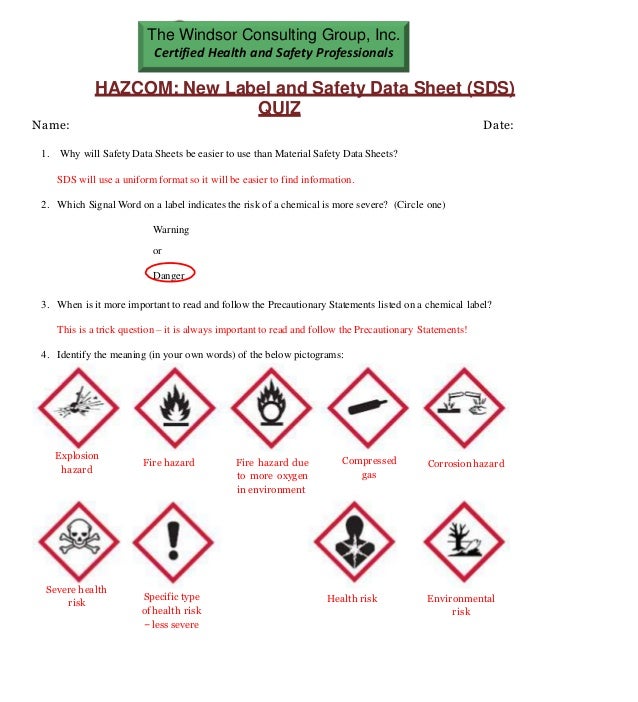
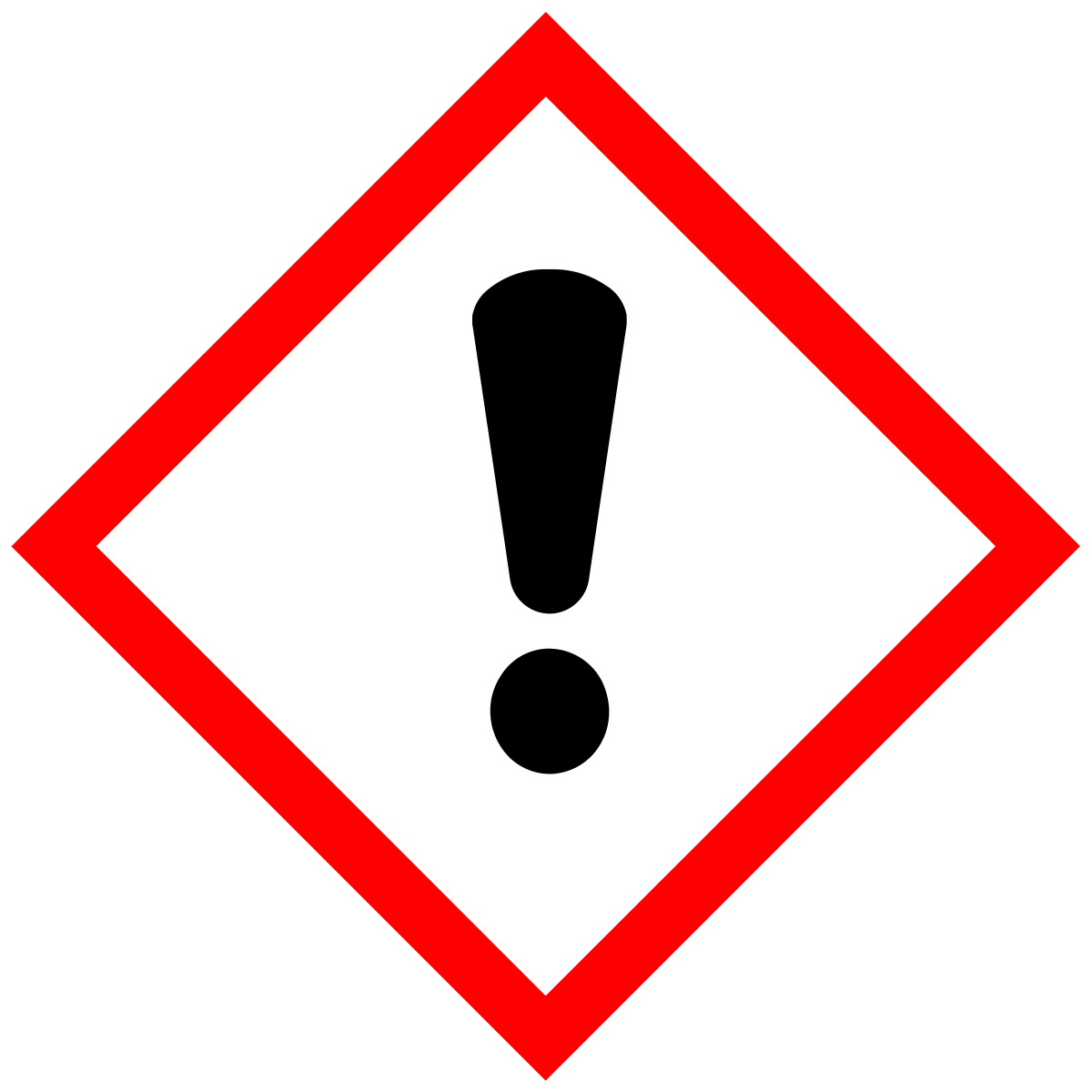


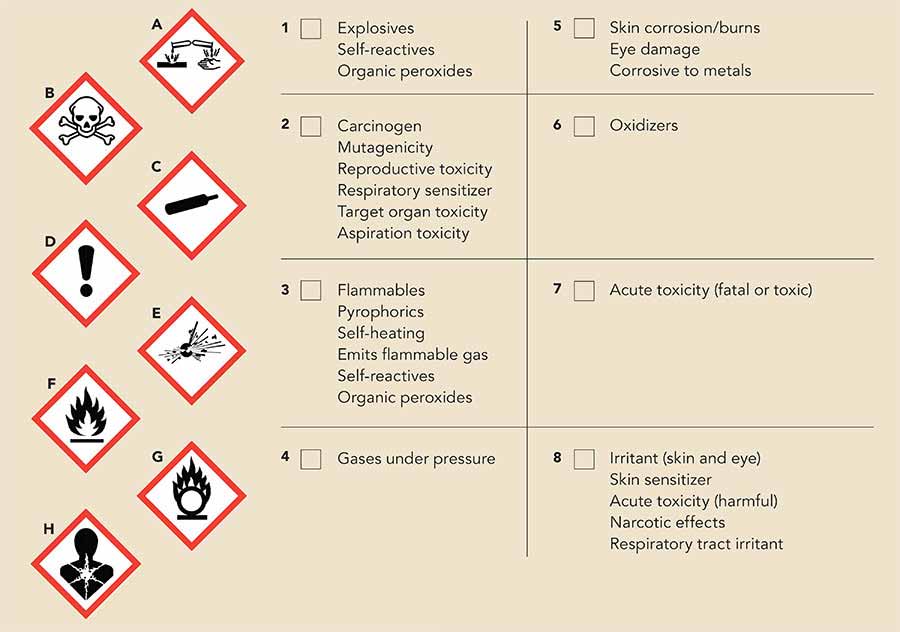
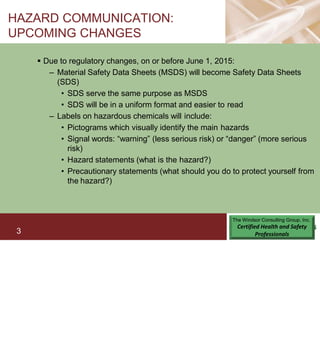


Post a Comment for "44 labels under hazard communication are the same as always"